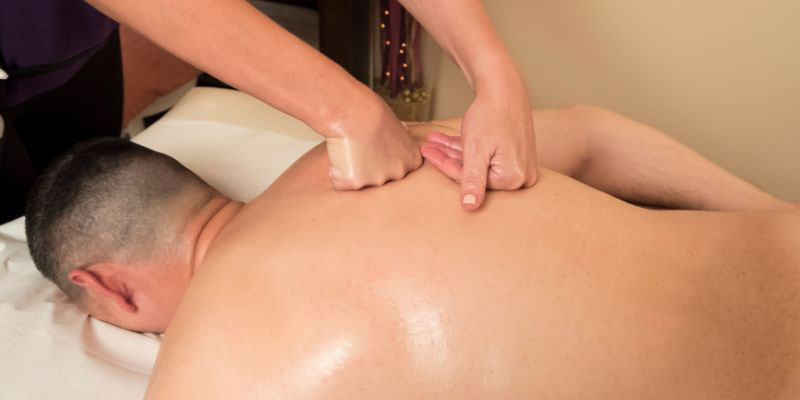Ever pondered the origins of T-Zone breakouts? Dermatology Direct Messages (Derm DMs) illuminate this prevalent skincare puzzle. Unveiling the intricacies, we explore the factors contributing to those troublesome T-Zone breakouts and delve into dermatologist-endorsed solutions. Understanding your skin's unique tendencies in the T-Zone is key to effective care.
Derm DMs provide insights, guiding you through tailored strategies for clearer, healthier skin. It's not just about managing breakouts; it's about comprehending and addressing the specific needs of your T-Zone. Let Derm DMs be your virtual skincare allies in unraveling the mystery and achieving a radiant complexion.
Understanding the T-Zone
The T-Zone, encompassing the forehead, nose, and chin, constitutes the central region of your face. Notoriously oilier than other areas, it harbors a higher concentration of sebaceous glands. Dermatology Direct Messages (Derm DMs) stress the significance of comprehending your specific skin type to tackle T-Zone breakouts effectively. Recognizing the unique characteristics of this zone is pivotal in tailoring a skincare routine that addresses excess oil production and prevents acne-related concerns.
Key Factors Leading to T-Zone Breakouts
Let's dive into the factors that contribute to these skin woes. Derm DMs shed light on key elements that play a role in those frustrating breakouts, specifically on the forehead, nose, and chin areas. Let's delve into these factors without further ado.
Excess Sebum Production: Your T-Zone, which includes your forehead, nose, and chin, has more oil-producing glands. Derm DMs say that when these glands become too active, they produce more oil than needed. This excess oil and dead skin cells create an environment where acne-causing bacteria thrive.
Clogged Pores: The T-Zone is prone to having pores getting clogged. Derm DMs point out that dead skin cells and debris can build up, leading to blocked pores. Regular exfoliation is crucial to prevent this buildup and keep your pores clear.
Hormonal Fluctuations: Hormones play a big role in T-Zone breakouts, especially during puberty, menstruation, or stress. Derm DMs suggest that these hormonal changes can trigger excess oil production and contribute to acne. Maintaining a consistent skincare routine helps manage hormonal acne.
Incorrect Skincare Products: Using products that don't suit your skin type or are too harsh can worsen T-Zone breakouts. Derm DMs advise against such products and recommend choosing skincare items that are non-comedogenic and suitable for oily or combination skin.

Derm DM Recommended Solutions:
Dermatology Direct Messages (Derm DMs) offer practical solutions for tackling T-Zone breakouts, emphasizing the importance of a tailored skincare routine. Here are the detailed recommended solutions:
Gentle Cleansing
Derm DMs unanimously stress the significance of using a mild, gentle cleanser in your skincare routine. Cleansing the T-Zone twice daily helps remove excess oil, dirt, and impurities without irritating. A gentle cleanser maintains the skin's natural barrier while effectively managing T-Zone breakouts.
Regular Exfoliation
Incorporating regular exfoliation into your skincare regimen is a key recommendation from Derm DMs. Exfoliation helps remove dead skin cells that can contribute to clogged pores in the T-Zone. Derm DMs advise using a mild exfoliant containing ingredients like salicylic acid, which effectively penetrates oil-filled pores and prevents breakouts.
Balanced Moisturization
Contrary to the misconception that moisturizing worsens oily skin, Derm DMs advocate for balanced moisturization. An oil-free and non-comedogenic moisturizer helps keep the skin hydrated without clogging pores. This is particularly important in the T-Zone, where the skin tends to be oilier. Keeping your skin properly moisturized helps it maintain its natural moisture balance and prevents the overproduction of oil.

Targeted Treatments
For individuals facing persistent T-Zone breakouts, Derm DMs suggest considering targeted treatments. These may include products containing active ingredients like benzoyl peroxide or retinoids. Benzoyl peroxide is known for its antibacterial properties, while retinoids promote cell turnover, preventing the formation of acne. However, Derm DMs emphasize the importance of consulting with a dermatologist before incorporating such treatments, as they can have varying effects based on individual skin types.
Preventing Future T-Zone Breakouts
Preventing Future T-Zone breakouts requires adopting a proactive and consistent approach to skincare. Derm DMs emphasize the significance of establishing a routine that addresses the unique characteristics of the T-Zone. Here's a detailed breakdown of key strategies:
Consistent Skincare Routine: Derm DMs stress the importance of a regular and well-balanced skincare routine. This includes cleansing, exfoliating, and moisturizing. Consistency in these steps helps regulate oil production, clear pores, and maintain overall skin health.
Sun Protection: Protecting the T-Zone from harmful UV rays prevents future breakouts. Derm DMs advocate for the daily use of broad-spectrum sunscreen with at least SPF 30. This protective measure helps prevent sun damage and reduces the risk of inflammation and acne flare-ups.
Healthy Lifestyle Choices: Derm DMs highlight the impact of lifestyle on skin health. Adopting a balanced diet rich in fruits, vegetables, and whole grains contributes to overall well-being, reflecting positively on the skin. Staying hydrated is equally vital, as it helps flush out toxins and maintains skin hydration.
Proper Hydration: Hydrating the skin is essential for preventing T-Zone breakouts. Derm DMs recommend using oil-free, non-comedogenic moisturizers to keep the skin adequately hydrated without exacerbating oiliness. Well-hydrated skin is less prone to excessive oil production.
Avoiding Touching and Picking: Derm DMs caution against touching or picking at the T-Zone. This can introduce bacteria, irritate the skin, and worsen breakouts. Practicing hands-off skincare helps maintain a healthy skin barrier and minimizes the risk of inflammation.
Wrapping It Up!
In conclusion, Derm DMs provide valuable insights into the reasons behind T-Zone breakouts and effective strategies to manage and prevent them. By understanding the unique characteristics of the T-Zone and adopting a targeted skincare approach, you can achieve clearer, healthier skin. Consistency is key, and consulting with a dermatologist can provide personalized guidance for your skin concerns.






